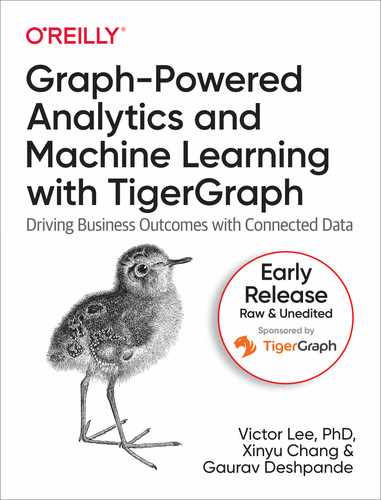With the rapid rise of graph databases, organizations are now implementing advanced analytics and machine learning solutions to help drive business outcomes. This practical guide shows data scientists, data engineers, architects, and business analysts how to get started with a graph database using TigerGraph, one of the leading graph database models available. You'll explore a three-stage approach to deriving value from connected data: connect, analyze, and learn. Victor Lee, Xinyu Chan, and Gaurav Deshpande from TigerGraph present real use cases covering several contemporary business needs. By diving into hands-on exercises using TigerGraph Cloud, you'll quickly become proficient at designing and managing advanced analytics and machine learning solutions for your organization.
Table of Contents
- 1. Graph-Powered Machine Learning Methods
- Unsupervised Learning with Graph Algorithms
- Finding Communities
- Finding Similar Things
- Finding Frequent Patterns
- Summary
- Extracting Graph Features
- Domain-Independent Features
- Domain-Dependent Features
- Graph Embeddings: A Whole New World
- Summary
- Graph Neural Networks
- Graph Convolutional Networks
- GraphSAGE
- Summary
- Comparing Graph Machine Learning Approaches
- Use Cases for Machine Learning Tasks
- Graph-based Learning Methods for Machine Learning Tasks
- Graph Neural Networks: Summary and Uses
- Chapter Summary
- 2. Entity Resolution Revisited
